Eczema ialah sejenis penyakit atau masalah kulit yang biasa ditemui, di mana kulit menjadi tersangat gatal dan meruam. Dikatakan eczema dan kulit alergik adalah penyakit kulit warisan, dan sesetengah eczema disertai dengan masalah asthma.
Perkataan eczema nampaknya tidak asing lagi kerana banyak orang yang menghadapi masalah ini. Eczema biasanya terdapat di muka, tangan, lengan, lutut, peha, betis dan kaki serta di beberapa bahagian tubuh yang lain. Pada bayi, eczema selalu terdapat di muka dan bahagian badan yang lain dalam bentuk tompok-tompok merah. Kawasan yang terkena eczema kelihatan sangat kering, menebal atau bersisik. Bagi mereka yang berkulit cerah atau putih, kawasan eczema ini pada mulanya kelihatan kemerah-merahan dan kemudiannya bertukar warna menjadi coklat terutamanya apabila ia selalu digaru dan terdedah kepada infeksi kuman. Oleh itu, cuba elakkan daripada menggaru dengan kuat sehingga luka atau berdarah. Eczema yang teruk memang kelihatan hodoh dan menjijikkan.
Penyebab sebenar eczema tidak diketahui tetapi ia dikaitkan dengan tindakan overaktif (terlampau) sistem imuniti badan kepada sebarang benda/keadaan yang menyebabkan eczema atau kulit gatal, seperti bersentuh dengan kain yang kasar yang menyebabkan kulit gatal, persekitaran yang terlalu panas atau terlalu sejuk, terdedah kepada beberapa produk kegunaan di rumah (i.e. sesetengah sabun membasuh kain atau pembersih rumah lain yang mengandungi bahan kimia yang kuat).
Walaupun masalah eczema ini tidak boleh dipulihkan sepenuhnya, tetapi ia boleh dikawal dengan rawatan dan ubat, rawatan herba, elakkan daripada kulit menjadi terlalu kering dengan memakai krim pelembab kulit serta jauhkan daripada bahan-bahan yang boleh menyebabkan kulit gatal. Jangan risau, eczema tidak berjangkit kepada orang lain, tidak seperti penyakit kulit lain yang disebabkan oleh bakteria atau fungus (i.e. kurap, panau).
Lihat Testimoni Bagaimana Alpha Lipid Lifeline dapat membantu merawat Eczema...klik sini...
Perincian maklumat tentang eczema dan cara mengawalnya dipaparkan dalam artikel di bawah ini untuk dikongsi bersama….
EczemaReviewed by Louise Chang, MDWhat Is Eczema?Eczema has been called “the itch that rashes” because the itching usually occurs first. This group of skin rashes may first appear in babies and toddlers, becoming a drier, flaky rash in older children. Adults may see scaly, leathery patches or a stubborn hand eczema. Atopic dermatitis is a common, often inherited form, but there are other types, as well as many treatment options.Eczema SymptomsItching is the defining symptom. Once you start scratching, the skin becomes inflamed — and even itchier. The appearance can vary greatly and may include:* Red, scaly areas
* Small, rough bumps
* Thick, leathery patches
* Bumps that leak fluid and crust overIn darker-skinned people, the affected area might be lighter or darker.Eczema in BabiesInfants who are just 6 to12 weeks old can develop atopic dermatitis as a patchy facial rash. It can progress, becoming red and scaly, and may appear on the forehead or scalp. Moisture from drooling worsens the rash. In some cases, the condition goes away by age 2. But about half of people who had atopic dermatitis as a child will have the condition as an adult.Atopic Dermatitis or Cradle Cap?“Cradle cap” in babies is actually a condition known as seborrheic eczema or seborrheic dermatitis. It appears as yellow, oily, scaly patches on the scalp and will usually clear up without treatment at 8 to 12 months of age. In contrast, atopic dermatitis (AD) in infants usually appears as a red rash. It’s more often found on the cheeks, but AD can also affect the scalp.Eczema in ChildrenChildren may develop the rash on the inside of their elbows or behind the knees, around their mouths, on the sides of their necks, or on wrists, arms, and hands. Those with atopic dermatitis are more likely to have food allergies, including allergies to peanuts, milk, or other nuts. However, experts say you shouldn’t restrict foods unless there is a confirmed food sensitivity. Reassure children that it isn’t contagious.Eczema in AdultsAdults typically notice itchy patches on the hands, elbows, and in the “bending” areas of the body, such as the inside of the elbows and back of the knees. But eczema can appear anywhere, including the neck, chest, even the eye lids. Those who had atopic dermatitis as a child may see drier, scaly rashes as adults. The skin may be discolored or thickened.Diagnosing EczemaIf a rash persists, causes significant discomfort, or develops a crust or pus-filled blister, you may want to see your health care provider. A diagnosis of eczema is usually based on a detailed medical history, symptoms, measurable physical signs, and a family history of allergic conditions. Your doctor may also order allergy tests or a microscopic exam of a skin scraping (seen here) to rule out infections.Who Gets Eczema?There’s a link between atopic dermatitis and hay fever or asthma. If a parent has hay fever or asthma, their children are more likely to have the skin condition. And about half of children with atopic dermatitis will go on to develop hay fever or asthma.Eczema and AllergiesThe substances that bring on an allergy attack — dust mites, pollen, animal dander, mold — can cause some people with atopic dermatitis to break out in a rash. Food allergies also can trigger a flare-up. These allergens cause the immune system to overreact, activating cells that produce inflammation in the skin.Other Eczema TriggersIrritants can cause inflammation and itching, bringing on a bout of eczema. Touching harsh chemicals can cause a nasty rash in anyone, but people with eczema may be sensitive to mild irritants, such as wool, detergents, astringents, or fragrances. Emotional stress can trigger a flare-up, as can sweating and frequent wetting and drying of the skin — even everyday hand-washing.Eczema and Dry SkinThe outer layer of our skin normally acts as a barrier, protecting inner layers from irritants and infection. People with atopic dermatitis have very dry skin that isn’t as protective. If you have eczema, use mild cleansers and apply a moisturizing cream or ointment after washing. A dry climate or the low humidity of winter can cause the condition to flare up. People with atopic dermatitis are also more likely to get skin infections.What Causes Eczema?We don’t know exactly what causes atopic dermatitis, the most common form of eczema. Experts believe genetic, environmental, and skin factors all play a role. A malfunction of the immune system may be involved, creating inflammation in the skin, even when there is no infection to fight. Emotional disorders do not cause eczema, as doctors thought many years ago, but stress can make symptoms worse.Stop the ScratchingPeople with atopic dermatitis may scratch as many as 500 to 1,000 times a day. That scratching worsens the rash and can increase the risk of infection due to breaks in the skin. Use a cold compress to lessen the itchy feeling. Distract children with activities. Moisturizers are soothing, and some medicated creams or ointments may help, too.Treatment: CorticosteroidsOver-the-counter hydrocortisone creams or ointments may help mild cases of eczema but should not be used on children under 2 or for more than seven days without consulting a doctor. Stronger corticosteroid products may be necessary to control the inflammation. Side effects from extended use include skin thinning, infection, and stretch marks. In rare cases that haven’t responded to other treatment, a doctor may prescribe oral or injectable corticosteroids.Treatment: AntihistaminesAntihistamines may provide relief from the vicious cycle of itching and scratching for some, but not all, people with the atopic dermatitis type of eczema. Many OTC and prescription-only options are available, each with slightly different dosing and side effects. Check with your health professional for a recommendation.Treatment: Immune ModulatorsPrescription topical medicines that calm an overactive immune system, such as Elidel and Protopic, may help treat eczema from atopic dermatitis. Doctors generally prescribe them only when other treatments have failed, for short-term use, in certain patients. They’re required by the FDA to carry a “black box” warning due to concerns about an increased risk of cancer. However, the American Academy of Dermatology disagrees with the FDA’s safety warning. It’s best to discuss the risks and benefits with your health care provider.Treatment: Hand EczemaPeople with severe hand eczema may get relief from a promising new drug. Studies have shown that alitretinoin, a relative of vitamin A, can greatly improve or even clear up hand eczema that didn’t respond to other treatments. It hasn’t yet been approved by the FDA for this use. It can cause headaches or dry, flushing, or sun-sensitive skin. You should not become pregnant while taking alitretinoin because it can cause severe birth defects.Treatment: PhototherapyUV light affects the immune system and can improve moderate to severe cases of eczema from atopic dermatitis or contact dermatitis. PUVA is a UV treatment combined with psoralen, a medication. Because UV light can cause skin damage or premature aging of the skin and increases the risk of skin cancer, you should discuss the risks and benefits with your health care provider. It may not help or worsen eczema in some people.Treatments for ChildrenCorticosteroids of various strengths may be used in children with atopic dermatitis, depending on the severity of the condition. Potent corticosteroids can suppress growth in children. Prescription topicals Elidel and Protopic have been approved by the FDA for children 2 years of age or older. Lifestyle changes are also important. Keep your child’s fingernails short and their skin moisturized. Dress them in loose-fitting clothes and make sure they do not become overheated.Treatment: Bleach BathsA small amount of household bleach in the bath may help control atopic dermatitis when there is a staph infection present, too. In one study, children with moderate to severe atopic dermatitis and staph soaked in diluted bleach baths and used an antibiotic ointment in their noses. These treatments significantly improved their skin symptoms. Parents should consult a dermatologist or other health care provider first to see if bleach baths are appropriate.Treatment: Herbs and MoreSome promising studies showed that probiotics, oolong tea, or Chinese herbal medicine may ease symptoms. However, other studies have not been supportive. Herbs and supplements are not regulated as closely as medicines and can sometimes have harmful effects. Be sure to talk to your doctor or other health care provider before taking herbs or supplements. Stress-reducing therapies such as massage and relaxation may also be helpful.Eczema and InfectionAlmost all people with atopic dermatitis have Staphyloccocus aureus bacteria on their skin, compared with just about 5% of people without the skin condition. Be alert to the signs of infection, including honey-colored crusts, pus- or fluid-filled blisters, scaly red patches, swelling, or fever, and contact your doctor or health care provider.Caring for Dry SkinEven when the eczema subsides, the dry skin remains. Hydrate the skin with short daily baths in warm water. Pat the skin partially dry and apply a thick moisturizer — emollients and creams are usually more effective than lotions — on top of any medication and elsewhere on the body within three minutes of taking the bath. Apply moisturizers throughout the day and use only mild soaps or cleansers. Look for fragrance-free products to help prevent a reaction. Remember, “unscented” may just mean the product contains another ingredient to mask the scent.Coping With EczemaYour child may feel self-conscious about the appearance of the rashes. Help him or her avoid triggers and cope with stress. The American Academy of Dermatology hosts Camp Discovery at several locations around the country for kids with skin conditions. Adults may need to adjust their activities. Jobs that require a lot of hand-washing or exposure to chemicals or other irritants, such as health care, housecleaning, or hairdressing, may not be a good choice for someone with eczema.
Ini adalah di antara soalan-soalan yang selalu ditanya oleh orang ramai tentang eczema…
3 Questions About EczemaAn interview with expert Asriani M. Chiu, MD, on eczema symptoms, causes, and prevention.By Charlene Laino
Reviewed by Laura J. Martin, MDIf your child has a dry, itchy skin rash on the elbow, eczema is most likely to blame.According to the National Institute of Allergy and Infectious Diseases, atopic, or allergy-related, eczema affects up to 30% of Americans, mostly kids, and the figure is on the rise.At the recent meeting of the American Academy of Allergy, Asthma & Immunology in New Orleans, WebMD spoke with Asriani M. Chu, MD, associate professor of pediatrics and medicine in the division of allergy and immunology at the Medical College of Wisconsin in Milwaukee, about eczema.What are the symptoms of eczema?The hallmark is a very itchy skin rash. It is a flatter, red rash as opposed to hives, which are more like raised, itchy, mosquito bite kind of bumps.The location of the rash is also a telltale sign. In kids, it tends to affect the elbows or behind the knees. Adults tend to have the hands affected. It’s often worse in the wintertime, when it’s cold and the air is dry inside due to heaters.What are the most common causes of eczema?If an allergic cause is identified, it is going to be more related to foods. Those foods could include commonly allergenic foods such as peanuts, tree nuts, eggs, and milk, for example. There have also been some studies that identified dust mite allergy as being a contributing factor. It is more likely to happen if somebody has a family history.Are there any practical things that you can do to prevent eczema?The really important thing is the dysregulation between your body’s moisture level and hydration. So you want to keep skin well moisturized and rehydrated.Some practical things include bathing at least daily in water that is not too hot. If it’s too hot it can take away the essential oils in the skin. You also don’t want to bathe too long because that can also dry the skin out. After you use kind of lukewarm water in your bath, maybe 10 minutes in length, pat dry the skin — don’t rub it dry — and then use moisturizers that are fragrance-free so they’re not irritating to the skin.If your health care provider has prescribed any topical prescription ointments, you would want to use those prescription ointments first, then the moisturizers.One of the other things that we mention is that “eczema is the itch that rashes, not the rash that itches.” So there may be times that the doctor may prescribe an allergy medication or anti-itching medication so that the person doesn’t scratch all the time.
Lihat Testimoni Bagaimana Alpha Lipid Lifeline dapat membantu merawat Eczema...klik sini...
credit: http://sitik.wordpress.com/2011/03/06/mengenal-eczema/

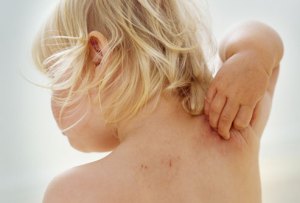









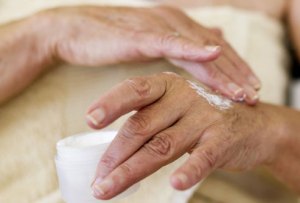

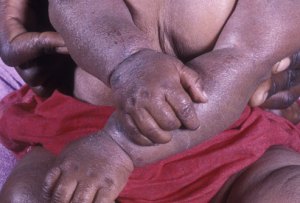





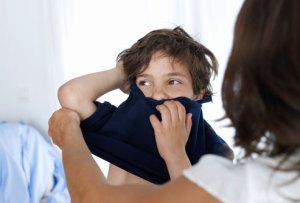



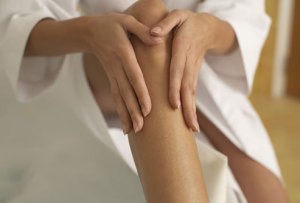
It's a nice article. Everyone should read. Thanks for sharing. For more amazing information you may get from this link Eczema
ReplyDeleteThis is one of the most significant information.
ReplyDeleteAnd i’m glad reading your article.
The site style is wonderful, the article is really excellent. For more amazing info please visit at this link Triggers Eczema